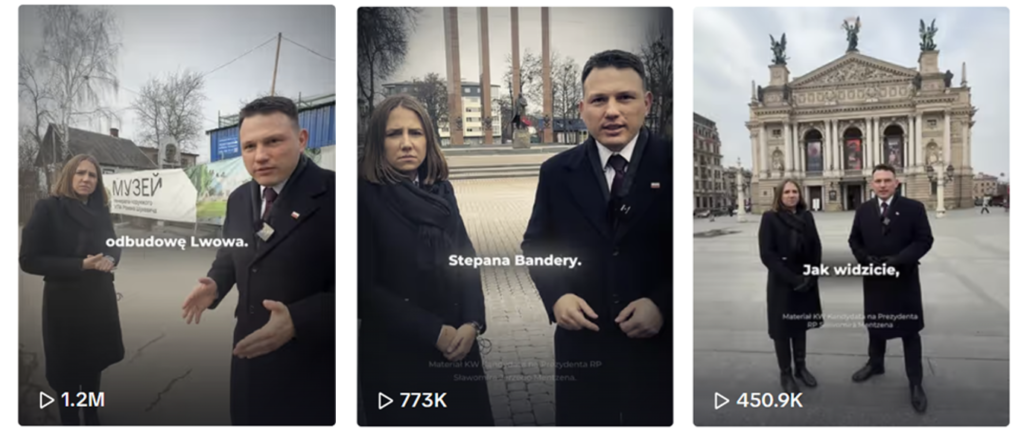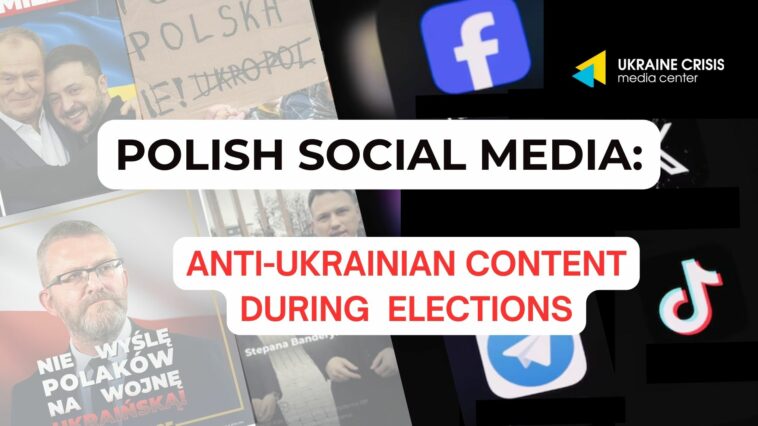In recent years, there has been a clear trend of social media being actively used to spread anti-Ukrainian messages and narratives in the information space of European countries. In this context, elections are the most vulnerable period from the perspective of information resilience, as populist politicians, in pursuit of voter sympathies, produce manipulative content.
The 2025 Polish presidential election was no exception to this troubling pattern. The current campaign was accompanied by the dissemination of anti-Ukrainian content on social media—particularly on Telegram, TikTok, Facebook, and X.
Still, it would be inaccurate to view the informational context of the elections in isolation from broader trends in the Polish political and media discourse. Numerous studies have documented a surge in anti-Ukrainian propaganda within Poland’s infosphere over the past year.
According to a joint report by the fact-checking organization Demagog and the Institute for Media Monitoring (IMM), Polish-language accounts published nearly 327,000 anti-Ukrainian posts in 2024, which is 13% more than in 2023. Notably, the volume of such content spiked sharply toward the end of the year, coinciding with the election season.
The platform with the highest concentration of anti-Ukrainian content was X, with around 5.4 million users in Poland. In 2024 85% of the identified anti-Ukrainian content was posted via 277,000 tweets or retweets.
On Facebook – the most popular social media platform in Poland with 24.7 million users – approximately 8% of all posts critical of Ukraine were published last year. The most active pages spreading anti-Ukrainian content included Konfederacja Korony Polskiej (Confederation of the Polish Crown), “Ukrainiec NIE jest moim bratem” (“The Ukrainian is NOT my brother”), Marsz Niepodległości (Independence March). During the election campaign, these pages posted promotional materials in support of far-right candidates Grzegorz Braun and Sławomir Mentzen.

According to the study’s authors, anti-Ukrainian posts on social media had over 75 million potential views. For comparison, in 2023, the total reach of anti-Ukrainian publications was about 54 million views. This indicates a nearly 40% increase in the reach of anti-Ukrainian content within a year.
The role of TikTok deserves special attention, as the platform has become a key source of disinformation among younger audiences (with around 11.5 million users in Poland). Confederation candidate Mentzen has actively leveraged TikTok’s capabilities. Polish political analysts have dubbed him the “King of TikTok,” noting his mastery of short-form video content to connect with young voters – a strategy that already brought him success during the 2023 parliamentary elections.
At the beginning of 2025, a deepfake video went viral in the Polish TikTok, in which U.S. President Donald Trump appears to express support for Mentzen’s candidacy. In fact, the original video was a March 2020 speech by Trump regarding the COVID emergency.

As for the anti-Ukrainian posts on Mentzen’s official TikTok page, the most widely viewed were the controversial videos recorded during his visit to Lviv in late February 2025. In total, three posts garnered approximately 2.4 million views.

Russia also activated Telegram to promote anti-Ukrainian disinformation within the Polish far-right auditorium ahead of the elections. For example, just days before the vote, the pro-Russian Czech-language Telegram channel Maršál Malinovskij published a fabricated video in which supposed Ukrainian radical nationalists in balaclavas threaten Mentzen if he does not withdraw his candidacy. The inauthenticity of the video was easy to detect, as the Ukrainian spoken featured a heavy Russian accent. Moreover, the video was shared and circulated within a network of Czech-language pro-Kremlin Telegram channels such as Maršál Malinovskij (20,500 subscribers) and neČT24 (32,000).

The 2025 Polish presidential election became a clear example of how social media has evolved into a primary tool for spreading anti-Ukrainian narratives and disinformation. Platforms such as X, Facebook, TikTok, and Telegram played a pivotal role in this process, with pro-Russian messaging actively used by far-right politicians and Kremlin propaganda. Under these conditions, strengthening informational resilience and implementing effective fact-checking mechanisms are critical for countering manipulative influence on public consciousness – especially during election periods, when society is at its most vulnerable in the information domain.
Volodymyr Solovian



